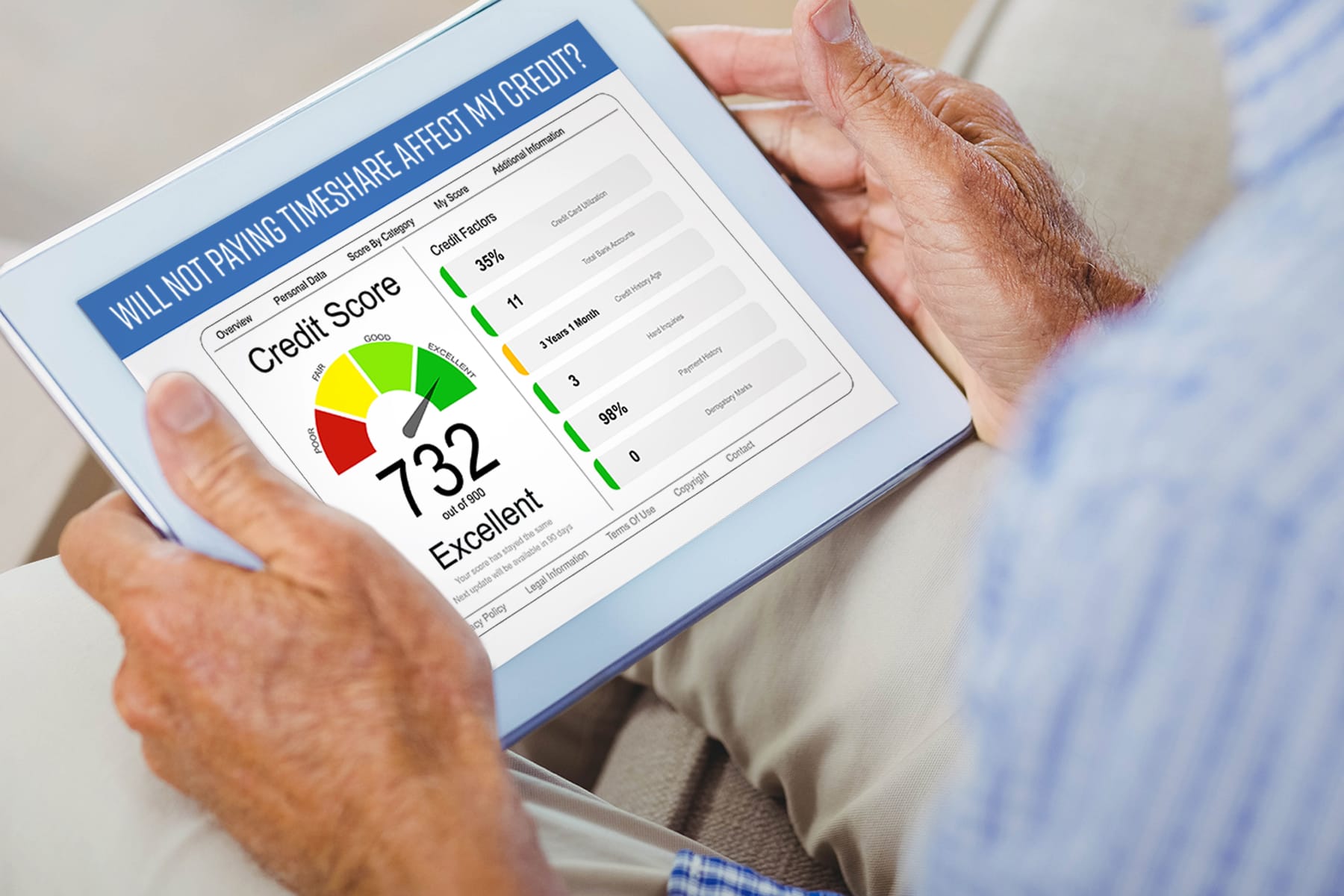

Finance
How To Remove Car Loan From Credit Report
Modified: March 1, 2024
Learn how to remove a car loan from your credit report and improve your financial standing. Find expert advice and tips on managing your finances with our finance guide.
(Many of the links in this article redirect to a specific reviewed product. Your purchase of these products through affiliate links helps to generate commission for LiveWell, at no extra cost. Learn more)
Table of Contents
- Introduction
- Understanding the Impact of Car Loans on Credit Reports
- Checking Your Credit Report for Car Loan Information
- Disputing Inaccurate Car Loan Entries on Your Credit Report
- Negotiating with Lenders for Car Loan Removal from Credit Report
- Seeking Professional Help to Remove Car Loans from Credit Reports
- Maintaining Good Credit after Car Loan Removal
- Conclusion
Introduction
Having a car loan can be a significant financial commitment. Whether you’re purchasing a new or used vehicle, a car loan allows you to spread out the cost over time, making it more affordable. However, it’s essential to understand that a car loan can have a lasting impact on your credit report.
Your credit report is a record of your borrowing history and financial behavior. It includes information about your credit accounts, payment history, and outstanding debts. Lenders, landlords, and even potential employers use your credit report to evaluate your creditworthiness.
When you take out a car loan, it becomes part of your credit history. If you make timely payments and manage the loan responsibly, it can have a positive impact on your credit. However, if you miss payments or default on the loan, it can significantly damage your credit score.
In some cases, you may want to remove a car loan from your credit report. Perhaps you have paid off the loan and want it reflected accurately, or maybe there are errors or inaccuracies that are negatively affecting your creditworthiness. Removing a car loan from your credit report can help improve your credit score and enhance your financial opportunities.
In this article, we will guide you through the process of removing a car loan from your credit report. We’ll explain how to check your credit report for car loan information, dispute inaccurate entries, negotiate with lenders, and seek professional assistance. We’ll also provide tips on maintaining good credit after removing the car loan from your credit report.
By following the steps outlined in this article, you’ll be equipped with the knowledge needed to navigate the process of removing a car loan from your credit report and taking control of your financial future.
Understanding the Impact of Car Loans on Credit Reports
Car loans play a crucial role in your credit history and can have both positive and negative effects on your credit report. It’s important to understand how car loans impact your credit so that you can make informed decisions and manage your finances effectively.
When you take out a car loan, it is considered an installment loan. This means that you borrow a fixed amount of money and repay it in regular installments over a set period. Each payment is reported to the credit bureaus, and your payment history forms a significant part of your credit report.
Positive impact: If you make your car loan payments on time and in full, it can have a positive impact on your credit score. Timely payments show lenders that you are responsible and reliable, and they are more likely to approve you for future credit. Additionally, a car loan demonstrates a mix of credit types, which can contribute to a higher credit score.
Negative impact: On the other hand, if you miss payments or default on your car loan, it can have a detrimental effect on your credit report. Late payments and defaults are reported to credit bureaus and can lower your credit score significantly. This can make it more challenging to obtain credit in the future or may result in higher interest rates.
Additionally, the outstanding balance of your car loan is considered as part of your overall debt. If you have a high debt-to-income ratio, it can indicate to lenders that you’re a higher credit risk. It’s important to manage your car loan and other debts responsibly to maintain a healthy credit profile.
Another factor to consider is the length of your car loan. If you have a longer loan term, such as a five or six-year repayment period, it may stay on your credit report for a longer time. While this isn’t necessarily negative, it’s important to be aware that your credit report will reflect the existence of the loan for an extended period.
In the next sections, we will explore how to check your credit report for car loan information, dispute inaccurate entries, negotiate with lenders, and seek professional assistance to remove a car loan from your credit report.
Checking Your Credit Report for Car Loan Information
Before taking any steps to remove a car loan from your credit report, it’s essential to obtain a copy of your credit report and review it thoroughly. Checking your credit report will help you understand how the car loan is currently being reported and identify any errors or inaccuracies that may be present.
Here’s how you can check your credit report for car loan information:
- Request a free copy of your credit report: Under the Fair Credit Reporting Act (FCRA), you are entitled to a free copy of your credit report from each of the three major credit bureaus (Experian, Equifax, and TransUnion) once a year. Visit AnnualCreditReport.com to access your reports.
- Review your credit reports: Once you have your credit reports, carefully review each one for any car loan entries. Look for information such as the name of the lender, account number, loan balance, payment history, and status of the loan.
- Check for accuracy: Pay close attention to ensure that the car loan information is accurate. Look for any discrepancies, such as incorrect payment amounts, late payments that you know you made on time, or loans that you have already paid off but are still showing as outstanding.
- Take note of errors or inaccuracies: If you identify any errors or inaccuracies in your credit report regarding your car loan, make a detailed note of them. Document the specific information that is incorrect, as this will be helpful when disputing the entry.
- Keep documentation: It’s important to gather any supporting documentation related to your car loan, such as payment receipts, statements, or loan agreements. These documents can serve as evidence to support your case when disputing the inaccuracies.
Checking your credit report is the first step towards removing a car loan from your credit report. By carefully reviewing the information and identifying any errors, you can proceed to the next steps of disputing the inaccuracies and seeking resolution with the credit bureaus and lenders.
In the next section, we will discuss the process of disputing inaccurate car loan entries on your credit report.
Disputing Inaccurate Car Loan Entries on Your Credit Report
If you find errors or inaccuracies in the car loan entries on your credit report, it’s essential to take immediate action to dispute and correct them. Disputing inaccurate information can help improve your creditworthiness and ensure that your credit report accurately reflects your financial history.
Follow these steps to dispute inaccurate car loan entries on your credit report:
- Write a dispute letter: Start by writing a formal dispute letter to the credit bureau(s) reporting the inaccurate information. Clearly explain the errors or inaccuracies you found regarding your car loan. Include any supporting documentation that proves your claims, such as payment receipts or loan statements. Be sure to include your contact information and any relevant account details.
- Send the dispute letter: Mail the dispute letter to the credit bureau(s) using certified mail with a return receipt requested. This will provide proof of delivery and ensure that your dispute is received and processed.
- Keep copies of everything: Make copies of all your dispute letter and supporting documentation for your records. It’s important to have documentation in case you need to follow up or provide additional evidence later.
- Wait for a response: The credit bureau has 30 days to investigate your dispute and respond to you. They will contact the lender and request verification of the information reported. If the lender cannot verify the accuracy of the entry, the credit bureau must remove it from your credit report.
- Review the updated credit report: Once you receive a response from the credit bureau, review your updated credit report to ensure that the inaccurate car loan entry has been removed or corrected. If it hasn’t been resolved to your satisfaction, you may need to follow up with the credit bureau and provide additional evidence.
It’s important to note that you should dispute inaccuracies with each credit bureau that is reporting the incorrect information. Disputing with one credit bureau may not automatically result in changes across all three bureaus.
If the credit bureau and lender do not correct the errors or continue to report inaccurate information, you have the option to escalate your dispute by filing a complaint with the Consumer Financial Protection Bureau (CFPB). The CFPB will review your case and work with you and the credit bureau to find a resolution.
In the following section, we will discuss how you can negotiate with lenders to remove a car loan from your credit report.
Negotiating with Lenders for Car Loan Removal from Credit Report
When disputing inaccurate car loan entries on your credit report is not enough, or if you have successfully paid off your car loan but it is still negatively impacting your credit, you may need to negotiate directly with the lenders to have the car loan removed from your credit report. This process requires effective communication and a willingness to work towards a mutually beneficial solution.
Here are steps to negotiate with lenders for the removal of a car loan from your credit report:
- Gather relevant documents: Collect all relevant documents related to the car loan, including the loan agreement, payment receipts, and any correspondence with the lender. These documents will serve as evidence to support your case.
- Contact the lender: Reach out to the lender either by phone or in writing to explain your situation. Clearly articulate that you have paid off the car loan and request that they update their reporting to reflect this on your credit report. Be prepared to provide any necessary documentation to substantiate your claim.
- Be persistent but polite: If the lender initially refuses to remove the car loan from your credit report, don’t give up. Continue to communicate with them, being persistent but polite. Explain the negative impact the car loan is having on your creditworthiness and express your desire for a fair resolution.
- Consider a goodwill letter: In some cases, writing a goodwill letter to the lender can be effective. This letter explains your situation, emphasizes your history of responsible payments, and kindly requests the removal of the car loan from your credit report as a gesture of goodwill. Be sincere and compelling in your letter, as this can help sway the lender’s decision.
- Get any agreements in writing: If the lender agrees to remove the car loan from your credit report, make sure to get the agreement in writing. This ensures that there is a record of the agreement and provides you with protection in case there are any discrepancies or future reporting issues.
- Monitor your credit report: After reaching an agreement with the lender, continue to monitor your credit report regularly to ensure that the car loan entry has been removed. If it still appears, follow up with the lender and provide them with a copy of the agreement to rectify the reporting issue.
Remember, negotiating with lenders can be a time-consuming process, and the outcome is not guaranteed. However, by maintaining open lines of communication, providing evidence, and expressing your willingness to find a fair solution, you increase your chances of successfully removing the car loan from your credit report.
In the following section, we will explore the option of seeking professional help to remove car loans from credit reports.
Seeking Professional Help to Remove Car Loans from Credit Reports
If you’re struggling to remove a car loan from your credit report on your own, or if you’re facing challenges in negotiating with lenders, seeking professional help can be a valuable option. Credit repair companies and credit counseling agencies are available to assist you in navigating the process and advocating on your behalf.
Consider the following options when seeking professional help to remove car loans from credit reports:
- Credit repair companies: Credit repair companies are organizations that specialize in improving credit scores and removing inaccuracies from credit reports. They have expertise in dealing with credit bureaus, lenders, and collection agencies. These companies will work on your behalf to dispute erroneous car loan entries and negotiate with lenders to have them removed from your credit report. However, it’s important to research and choose a reputable credit repair company to ensure ethical practices.
- Credit counseling agencies: Credit counseling agencies provide financial guidance and expertise to help individuals manage their debts and improve their credit. They can assist you in developing a realistic repayment plan and negotiating with lenders to update your credit report. Credit counseling agencies may charge fees for their services, but they can offer valuable advice and support in your journey to remove car loans from your credit report.
- Legal assistance: In some cases, you may need to seek legal assistance to resolve issues with car loan entries on your credit report. Consulting with a consumer protection attorney can provide you with legal advice and assistance in dealing with credit bureaus and lenders. An attorney can guide you through the legal processes and help ensure that your rights are protected.
When considering professional help, it’s crucial to research and choose a reputable company or agency. Look for organizations with a track record of success, positive client reviews, and a clear fee structure. Be cautious of any company that guarantees to remove accurate information from your credit report or requests upfront payment before rendering services.
Professional help can provide you with the knowledge, expertise, and resources necessary to navigate the complexities of removing car loans from credit reports. Additionally, they can save you time and effort by handling the process on your behalf.
In the next section, we will discuss how to maintain good credit after successfully removing a car loan from your credit report.
Maintaining Good Credit after Car Loan Removal
Removing a car loan from your credit report is a significant accomplishment that can positively impact your credit score and financial future. However, it’s important to continue practicing good credit habits to maintain and build upon your progress. Here are some tips for maintaining good credit after successfully removing a car loan from your credit report:
- Pay your bills on time: Timely payment of all your bills, including credit card bills, loans, and utilities, is crucial for maintaining a good credit score. Set up automatic payments or create reminders to ensure you never miss a due date.
- Keep your credit utilization low: Credit utilization refers to the percentage of your available credit that you are using. Aim to keep your credit utilization below 30%. Pay down your credit card balances regularly to maintain a healthy credit utilization ratio.
- Maintain a mix of credit: Having a diverse mix of credit types, such as loans and credit cards, can positively impact your credit score. It demonstrates that you can manage different types of credit responsibly. Consider maintaining a small credit card balance or applying for a new credit card if it aligns with your financial goals.
- Monitor your credit regularly: Keep a close eye on your credit by monitoring your credit reports and scores regularly. Look for any new inaccuracies or suspicious activity. Many credit bureaus and credit monitoring services offer free credit report access and alerts, so take advantage of these resources.
- Manage your debts responsibly: If you have other outstanding debts, such as student loans or mortgages, it’s important to manage them responsibly. Make your payments on time and communicate with lenders if you’re facing financial challenges. By being proactive, you can avoid further negative impacts on your credit.
- Build an emergency fund: Having an emergency fund can help protect your financial well-being and prevent you from falling into debt. Aim to save three to six months’ worth of living expenses in a separate savings account. This way, you’ll have a cushion to rely on in case of unexpected expenses or loss of income.
Remember, maintaining good credit is an ongoing process that requires discipline and responsible financial management. By adopting these healthy credit habits, you can continue to build a strong credit profile and increase your chances of obtaining favorable interest rates and loan terms in the future.
Also, stay informed about changes in credit reporting rules and regulations. Understand your rights and take necessary actions to address any discrepancies or inaccuracies that may arise in the future.
By implementing these strategies and staying proactive with your credit management, you can enjoy the benefits of a strong credit profile long after removing the car loan from your credit report.
Now that you have a solid understanding of how to remove car loans from credit reports and maintain good credit, you can take control of your financial future and work towards achieving your financial goals.
If you have any further questions or need personalized guidance, consider consulting with a financial advisor or credit counselor who can provide tailored advice and support.
Conclusion
Removing a car loan from your credit report can be a beneficial step towards improving your creditworthiness and financial well-being. By understanding the impact of car loans on credit reports, checking your credit report for car loan information, disputing inaccurate entries, negotiating with lenders, and seeking professional help when needed, you can take control of your credit and work towards a better financial future.
Remember that the process of removing a car loan from your credit report may take time and effort, but it is worth the persistence. Be diligent in reviewing your credit reports, identifying any errors or inaccuracies, and taking the necessary steps to dispute and correct them. Consider seeking professional assistance if you encounter challenges or want expert guidance throughout the process.
Maintaining good credit after removing a car loan from your credit report is equally important. Practice responsible credit management by paying your bills on time, keeping your credit utilization low, monitoring your credit regularly, and managing your debts wisely. Building an emergency fund can also provide financial security and help prevent future debt problems.
By following these strategies and staying committed to responsible financial habits, you can continue to build a strong credit profile and open doors to better financial opportunities. Remember that your credit is a reflection of your financial responsibility, and by taking the necessary steps to maintain good credit, you are setting yourself up for a successful and prosperous financial future.
If you have any further questions or need personalized advice, consider consulting with a financial advisor or credit counseling agency. They can provide tailored guidance based on your specific circumstances and help you achieve your credit and financial goals.
Take the necessary steps today to remove car loans from your credit report and pave the way to a brighter financial future.














